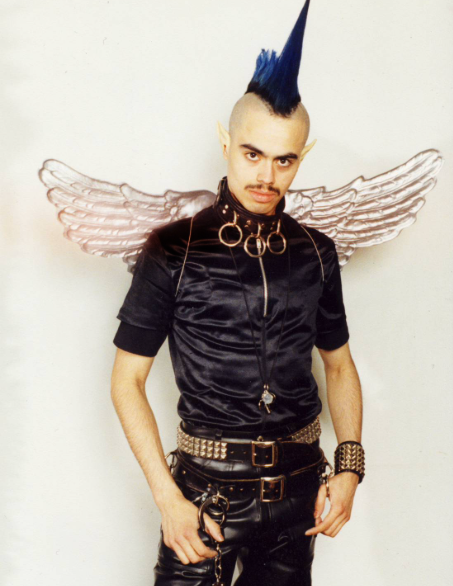
1966 - 2020
Michael Alig
Summary
Name:
Nickname:
King of the Club KidsYears Active:
1996Birth:
April 29, 1966Status:
DeceasedClass:
MurdererVictims:
1Method:
Strangulation / Beating / DismembermentDeath:
December 24, 2020Nationality:
USA
1966 - 2020
Michael Alig
Summary: Murderer
Name:
Michael AligNickname:
King of the Club KidsStatus:
DeceasedVictims:
1Method:
Strangulation / Beating / DismembermentNationality:
USABirth:
April 29, 1966Death:
December 24, 2020Years Active:
1996Date Convicted:
October 1, 1997bio
Michael Alig was born on April 29, 1966, in South Bend, Indiana, to John and Elke Alig. His mother, originally from Bremerhaven, Germany, immigrated to the United States after marrying John, a computer programmer. The couple divorced when Michael was four years old. Growing up, Alig was an intelligent student, attending Grissom Middle School and Penn High School, where he excelled academically and graduated in the top 8% of his class. Despite his academic prowess, Alig faced constant bullying due to his sexuality, prompting him to seek a more accepting environment.
In 1984, he moved to New York City and enrolled at Fordham University to study architecture before transferring to the Fashion Institute of Technology (FIT). At FIT, he was introduced to the city's vibrant nightlife through friends connected to artist Keith Haring. Alig soon dropped out of school and began working at the iconic nightclub Danceteria as a busboy. Observing the industry closely, he quickly moved up the nightlife ranks, becoming a high-profile party promoter.
In the late 1980s and early 1990s, Alig emerged as a key figure in the Club Kids movement—a flamboyant, drug-fueled subculture that fused fashion, performance, and hedonism. Alongside his followers, including James St. James, Robert “Freeze” Riggs, and Amanda Lepore, Alig organized eccentric events featuring elaborate costumes and “outlaw parties” in unusual venues like McDonald's or subway stations. His success landed him a job under nightclub mogul Peter Gatien, where he promoted events at The Limelight, Club USA, Tunnel, and the Palladium.
Alig's rise was matched by his increasing volatility and drug abuse. He developed a reputation for erratic, sometimes abusive behavior—including throwing money on dance floors, urinating on guests, and staging violent antics. He was arrested several times for drug-related offenses, and in 1995, Gatien sent him to rehab. Diagnosed with histrionic personality disorder, Alig embraced his need for extreme attention and spectacle, stating that the condition actually aided his career in nightlife promotion.
However, by the mid-1990s, federal investigations into drug trafficking at Gatien’s clubs, including The Limelight, led to closures and loss of work for many—among them, club fixture and drug dealer Andre "Angel" Melendez, who had been selling drugs at the clubs and briefly moved in with Alig. What followed would become one of the most notorious crimes in 1990s New York club history.
murder story
On the night of March 17, 1996, an argument broke out in Michael Alig's apartment between him and his roommate, Robert D. "Freeze" Riggs, and Andre "Angel" Melendez. The argument was about various issues, including a drug debt owed by Melendez. During this confrontation, Melendez was killed by the two men. Alig later claimed he did not remember the details clearly due to being under the influence of drugs at the time.

After the death of Melendez, Alig and Riggs were unsure of what to do with the body. They initially placed it in the bathtub and filled it with ice. However, as days passed, the body began to decompose, which created a terrible smell. Seeking a solution, Riggs went to a store to buy knives and a box. In exchange for heroin, Alig agreed to help dismember Melendez's body. He cut off Melendez's legs, placing them in separate garbage bags and dumping them into the Hudson River. The torso was placed in a large box that Riggs found in their apartment's basement and was also thrown into the river.
In the weeks following Melendez's disappearance, Alig spoke about the killing to various people, claiming that he and Riggs were responsible. However, most people dismissed him, thinking he was just seeking attention. The police did not focus on Alig for several months because they were investigating his former boss, Peter Gatien. This changed when children discovered a box containing a legless torso in the Hudson River. In November, the coroner confirmed that the remains belonged to Melendez.
After Melendez’s body was identified, Alig fled New York but was eventually found and arrested in a motel in New Jersey. Riggs confessed to the police, detailing how the argument escalated and how Melendez was killed. Although Alig maintained that he acted in self-defense, he was offered a plea deal for manslaughter. Both Alig and Riggs accepted the plea and were sentenced to 10 to 20 years in prison in October 1997.